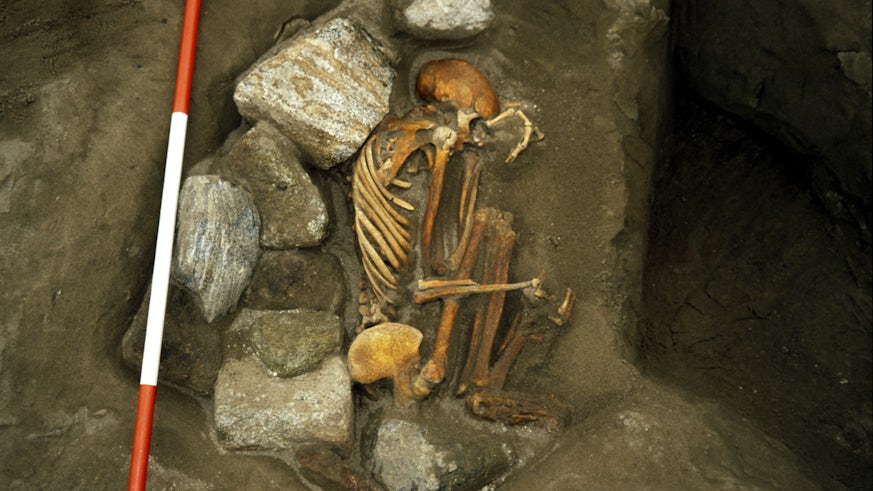Much more than mummies: colossal research reveals Bronze Age life on outer edges of Britain
13 December 2021

New book from the team behind Cladh Hallan research sequences the roundhouse way of life in prehistoric South Uist
The remarkable everyday life of ordinary people over four millennia ago features in a new book sequencing life at a uniquely well-preserved site lying beneath the machair sand of South Uist. This first volume presents the settlement and funerary activity from this unusually long-occupied site in the Western Isles of Scotland.
Best known for the mummies found beneath its roundhouses, Cladh Hallan's remarkable stratigraphic sequence reveals a unique 1500-year sequence of life from the Beaker period (Early Bronze Age c. 2000 BC) to the Early Iron Age (c. 500 BC) in Britain.
Twelve roundhouses, six inhumation burials, nine cremation burials, gold jewellery and bronze casting mould fragments are among the gems revealed over nine years of excavation, with a staggering 150,000 animal bones, 75,000 pottery sherds and 2,700 small finds recovered by around 200 site workers. While the first evidence of Bronze Age mummification in Britain caught the immediate imagination, it is the long occupation sequence within a row of three sunken-floored roundhouses (10th century BC) revealed since that is giving a fresh picture of life in the Bronze Age.
Professor in Bioarchaeology Jacqui Mulville, co-director who has been hands-on at Cladh Hallan since 1996, explains more:
‘One of the most important results of the excavation has come from intensive environmental and micro-debris sampling of house floors and outdoor areas to recover patterns of discard and to interpret the spatial use of 15 domestic interiors from the Late Bronze Age to the Early Iron Age.
‘From roundhouse floors we gain intimate insights into how daily life was organized within the house - where people cooked, ate, worked and slept. Such evidence rarely survives from prehistoric houses in Britain or Europe, and the results make a profound contribution to long-running debates about the internal organisation of roundhouse activities’ she adds.
And today, visitors to the island can now see how the 3,000 year-old original settlement sits within today’s landscape thanks to a brand-new augmented reality app, Uist Unearthed (Ulaidhean Uibhist), launched this summer by archaeologists from Lews Castle College UHI.
The project team - Mike Parker Pearson, Jacqui Mulville, Helen Smith, and Peter Marshall, then all at Sheffield University - evolved to incorporate the expertise of archaeologists across the UK, including Cardiff, Bournemouth, Southampton, Oxford and King Alfred’s College, Winchester. During the lifetime of the project, hundreds of archaeology students from Cardiff and beyond have amassed valuable experience at the site and at their institutions.
This latest stage of this Hebridean research began in 1988, but Cardiff’s archaeological links go back to the 50s with the North Uist excavations of Professor Richard Atkinson.
Featured in Current Archaeology on its publication,Cladh Hallan: roundhouses and the dead in the Hebridean Bronze Age and Iron Age – Part 1: stratigraphy, spatial organisation and chronology is published by Oxbow Books.
